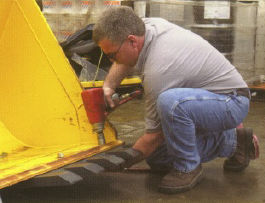24000 W. 43rd St
(913) 422-3040
4101 NE Lakewood Way
816-491-8896
112 NE 92 Hwy.
816-532-8288
Best Practices for Cutting Edge Life
 |
A well maintained cutting edge can give a machine extra breakout force. It can also help you avoid replacing your bucket prematurely, while also, helping with safety on the job site. |
Operating Tips
Avoid Excessive Back Dragging – Back dragging reduces cutting edge life by causing it to break before it wears down.
Minimize Excessive Down Pressure – Buckets last longer if the operator minimizes the amount of pressure applied when the bucket is engaged with the ground.
Avoid Using Blades in Wet Conditions – Blades wear faster in wet conditions.
Equipment Tips
Use Corner Attachments – Corner cutting edges can strengthen the bucket and prevent wear. Corner shanks and teeth on backhoe and excavator buckets can provide the same protection along with increasing the bucket’s breakout force.
Use Proper Bolts and Nuts – Loose bolts and nuts cause the cutting edge to be loose on the moldboard, which can lead to breakage. Use Grade 8 bolts or higher; lower quality may stretch and loosen.
Rotate the Cutting Edge Consistently – Flipping the blade regularly can double the blade life. The flipping interval depends upon what type of material it’s used for, and the application.
Inspection Tips
Inspect Loader Edge Position – The base edge is the primary support for the bucket system, while the primary engagement edge should be the bolt-on cutting edge. If the base edge is worn out, the bucket is not as stable.
Inspect Loader Wear Plates – Increase the life of the bucket and cutting edge by replacing wear plates regularly.
Routinely Inspect and Secure Bolts – Loose cutting edges can easily be damaged and may fall off and damage surrounding equipment.
